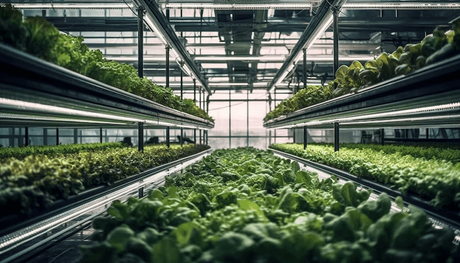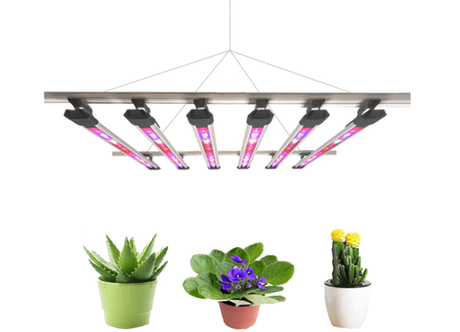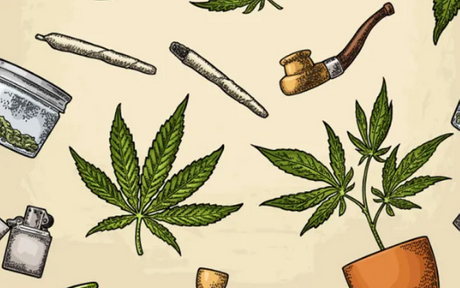As cannabis cultivation evolves from small-scale artisanal growing to a sophisticated, technology-driven industry, the question of how plants respond to different growing environments has become increasingly relevant. Among the innovations reshaping this landscape, vertical cultivation stands out as one of the most transformative. Designed to maximize production per square foot, vertical systems stack multiple layers of cannabis plants under controlled lighting and environmental conditions. They promise higher yields, efficient space usage, and improved sustainability. But as with any innovation, they also introduce new challenges — and one of the most debated among growers is plant stress.
Is stress inherently higher in vertical cannabis cultivation than in traditional, single-layer growing systems? The answer, like many things in horticulture, depends on perspective. To understand it, we must delve into how plants experience stress, how vertical systems alter their environment, and whether these changes truly harm — or perhaps even help — the plant's physiology and productivity.
Understanding Plant Stress in the Context of Cannabis
Before examining the vertical setup, it's essential to define what "stress" means in plant biology. In cannabis cultivation, stress refers to any environmental or physiological factor that disrupts a plant's equilibrium. Some forms of stress are detrimental — leading to reduced growth, lower yield, or even plant death. Others, paradoxically, can be beneficial when properly controlled, stimulating the plant to produce more cannabinoids, terpenes, or secondary metabolites as a defense mechanism.
Cannabis is an incredibly responsive organism. Temperature, humidity, light intensity, airflow, and nutrient availability all act as signals that shape its metabolic behavior. In traditional single-layer cultivation, these variables can be managed relatively easily because each plant experiences a fairly uniform environment. Vertical systems, however, complicate that balance by introducing multiple growing tiers, each with its own microclimate.
This layered architecture is the root of the debate. While vertical farming optimizes space and output, it challenges the grower's ability to maintain environmental uniformity across all levels. The resulting fluctuations in temperature, humidity, or airflow can create stress conditions that differ significantly from one tier to another.
The Vertical Paradigm: Innovation Meets Biological Limits
Vertical cannabis cultivation is not simply a change in layout — it is a complete reimagining of how plants and technology interact. In a traditional horizontal setup, plants grow on a single plane, typically under one canopy of lighting and ventilation. In a vertical system, multiple shelves or racks are stacked vertically, each equipped with its own LED lighting and irrigation systems.
This architecture allows producers to multiply their canopy area severalfold without expanding their physical footprint. In commercial terms, it's revolutionary. A facility that once produced 100 pounds per harvest might now achieve 300 or 400, simply by utilizing vertical space. However, this compact efficiency can come at a cost to the plant's comfort.
Plants, like all living organisms, evolved under open, horizontal conditions. Light naturally arrives from above; air circulates freely; heat dissipates into the atmosphere. Vertical cultivation alters these dynamics. Light may reach plants from closer angles, airflow becomes more restricted, and heat can accumulate unevenly between tiers. These small environmental inconsistencies are enough to trigger physiological responses — sometimes subtle, sometimes dramatic — in the plants themselves.
Light Distribution and Photosynthetic Stress
Lighting is perhaps the most defining variable in any cannabis grow, and in vertical setups, it is both a marvel and a challenge. LEDs have enabled vertical cultivation by offering low-heat, high-efficiency illumination, yet they also create a distinct lighting environment compared to natural or horizontal setups.
In traditional cultivation, light intensity gradually diminishes as it penetrates the canopy. Growers can adjust light height, angle, and reflectivity to ensure even distribution. In a vertical rack, however, each layer receives direct light from fixtures positioned very close to the canopy — sometimes just 6 to 12 inches away. While this proximity enhances energy efficiency, it also increases the risk of light stress if the intensity surpasses the plant's photosynthetic tolerance.
Cannabis plants exposed to excessive light energy experience photooxidative stress, where chlorophyll molecules absorb more energy than they can process. This leads to the formation of reactive oxygen species, damaging cell membranes and proteins. The symptoms manifest as leaf bleaching, curling, or slowed growth. In vertical farms, such stress tends to occur on upper racks where heat and light combine to intensify exposure.
Yet this does not mean vertical lighting is inherently harmful. When properly calibrated, LEDs in vertical systems can create an ideal photosynthetic photon flux density (PPFD) that enhances growth uniformity and cannabinoid synthesis. The stress emerges not from the concept itself, but from the margin of error. The tighter the space, the less room there is for environmental fluctuation — and the faster a mistake translates into plant stress.
Temperature and Humidity Gradients Across Levels
If light is the most visible difference between vertical and traditional cultivation, temperature and humidity are the most subtle — and perhaps the most consequential.
In a single-layer grow room, air circulation systems are designed to maintain even conditions. Fans, ducts, and sensors can easily monitor and regulate climate. In a vertical system, however, the air does not move uniformly. Warm air naturally rises, meaning the top racks can be several degrees hotter than the bottom ones. Humidity, on the other hand, tends to accumulate at lower levels where transpired moisture from leaves condenses.
These microclimatic gradients introduce significant physiological challenges for cannabis plants. Those on the upper tiers may experience heat stress, accelerating transpiration and metabolic rates, leading to wilting or nutrient imbalance. Lower-tier plants may suffer from excessive humidity, which promotes mold and mildew. Both extremes can cause chronic stress, reducing photosynthetic efficiency and affecting the plant’s internal signaling pathways.
Some modern facilities combat this with advanced HVAC designs that distribute air horizontally at each level or through vertical ducts running between racks. Automated climate control systems now use real-time sensors to adjust fan speeds, airflow direction, and dehumidification cycles. Still, these solutions require precise calibration and continuous monitoring — human error or equipment malfunction can quickly lead to environmental imbalances that traditional setups rarely face.
Root Zone and Nutrient Dynamics
In vertical cannabis systems, especially those employing hydroponic or aeroponic methods, root zone management becomes a critical determinant of plant stress. Unlike soil-based growing, hydroponic roots are directly exposed to nutrient solutions whose temperature, oxygenation, and chemical balance must remain stable.
When multiple tiers share a central nutrient reservoir, minor inconsistencies in flow rate or oxygen saturation can cascade through the system. For instance, upper racks might receive slightly warmer nutrient solutions due to heat rising from lights below. This temperature variation affects root respiration and nutrient uptake efficiency, subtly altering plant metabolism.
Cannabis roots thrive in temperatures between 18–22°C (64–72°F). Beyond this range, oxygen solubility in water decreases, and roots begin to suffocate. Prolonged oxygen deficiency leads to root stress, stunted growth, and vulnerability to pathogens like Pythium (root rot).
Traditional soil-based systems have more buffering capacity — temperature and nutrient fluctuations are slower and less severe. In contrast, the precision and immediacy of hydroponics make vertical systems both powerful and unforgiving. A small deviation in pH or EC (electrical conductivity) can induce stress responses across dozens of plants simultaneously.
Airflow, CO₂, and Plant Respiration
Vertical systems complicate not just the physical climate but also the chemical one. Cannabis plants depend on a continuous exchange of gases — CO₂ for photosynthesis and oxygen for respiration. In a stacked environment, CO₂ tends to accumulate unevenly, often depleting more rapidly in upper levels where light intensity is greatest and photosynthetic activity is highest.
Inadequate CO₂ replenishment creates a subtle but chronic form of stress. The plants continue receiving strong light energy, yet their ability to process it into sugars diminishes, leading to an internal energy imbalance known as photoinhibition. This can manifest as slowed growth, irregular leaf morphology, or decreased cannabinoid concentration.
Advanced vertical farms now employ CO₂ distribution manifolds at each level to maintain consistent concentrations. Still, fine-tuning CO₂ delivery to multiple zones remains more complex than enriching a single, open canopy. The challenge underscores a key theme of vertical cultivation: every layer adds both productivity and complexity, and managing that balance is the art that separates success from failure.
Mechanical and Spatial Stress
Another unique aspect of vertical cannabis cultivation is the physical constraint of space. In traditional grows, plants have room to spread, stretch, and develop a natural canopy structure. In vertical racks, each plant’s growth is limited by height restrictions, airflow clearance, and proximity to neighboring plants.
This spatial limitation can induce mechanical stress — the physical restriction of growth due to lack of room or contact with structural elements. Cannabis is a naturally phototropic plant, meaning it grows toward light sources. When light angles shift or become obstructed by rack architecture, plants must constantly adjust their growth direction. This adaptation consumes energy and can result in uneven canopy development.
Some growers embrace this constraint intentionally, using low-stress training (LST) or pruning to shape plants for vertical environments. When managed well, this physical stress can actually enhance yield by promoting lateral branching and even light distribution. However, without careful maintenance, overcrowding can cause leaf shading, stagnant air pockets, and an increased risk of disease — all stressors that collectively reduce plant performance.
Biochemical Indicators of Stress
To understand whether vertical cultivation genuinely imposes more stress than traditional methods, one can look at biochemical markers in the plants themselves. Cannabis plants respond to stress through changes in their internal chemistry — producing heat-shock proteins, antioxidants, and secondary metabolites such as terpenes and cannabinoids.
Interestingly, mild stress often leads to desirable outcomes. Controlled exposure to light or nutrient stress can trigger increased trichome density and cannabinoid synthesis, as the plant attempts to defend itself from perceived threats. However, chronic or severe stress does the opposite, suppressing growth and reducing quality.
In studies comparing vertical and horizontal grows, plants in well-managed vertical systems typically exhibit similar biochemical profiles, provided that environmental parameters remain within optimal ranges. The real differentiator is consistency. Traditional single-layer setups have fewer variables to control, making consistent results easier to achieve. Vertical systems, with their inherent complexity, have a narrower margin for error — and when things go wrong, stress levels spike faster and propagate more widely.
Adaptation Through Technology and Management
It would be misleading to conclude that vertical systems are inherently stressful for cannabis. Rather, they are technically demanding. Growers who master environmental uniformity can cultivate plants that thrive as well — or even better — than those in traditional setups.
Automation plays a critical role in mitigating stress. Modern vertical farms integrate sensors, data analytics, and AI-driven climate systems that adjust conditions in real time. They track variables like vapor pressure deficit (VPD), canopy temperature, and CO₂ levels across every tier. This level of control can exceed what's possible in traditional grows, where environmental fluctuations are often broader.
In other words, while vertical systems increase potential stress factors, they also offer more precise tools to counteract them. The key lies in experience, calibration, and constant observation. A vertical farm run by an inexperienced team can easily become a high-stress environment for plants. The same system in skilled hands can outperform conventional methods in both yield and quality.
Economic and Ecological Dimensions of Stress
There's another kind of "stress" to consider — not on the plants, but on the system itself. Vertical cultivation is capital-intensive, requiring specialized racks, irrigation infrastructure, and lighting. When operational margins are tight, some growers push environmental thresholds to maximize output. Running higher light intensities, tighter planting densities, or reduced downtime between harvests can all increase plant stress inadvertently.
Traditional setups, by contrast, often allow for more organic rhythms — more airflow, fewer mechanical components, and longer recovery cycles. But they also consume more land, water, and energy per gram of yield. From a sustainability standpoint, vertical cultivation represents a leap forward, even if it demands a more vigilant approach to stress management.
Interestingly, plants themselves can become more resilient over successive vertical growing cycles. As genetics adapt to the unique microclimate, cultivars bred within vertical systems start exhibiting tolerance to those specific stress conditions. This evolutionary adaptation hints at a future where plant stress may not just be managed but engineered to benefit the plant and the grower alike.
The Psychological Parallel: Human Stress in the Vertical Era
It's worth noting a curious parallel: as technology reshapes cannabis farming, it also reshapes the grower's relationship with the plant. Traditional cultivation often carries a sense of intimacy — soil between fingers, visual cues from every leaf. Vertical cultivation introduces a layer of mediation through sensors, software, and data dashboards.
In this sense, managing stress in vertical cultivation becomes as much about human adaptation as plant adaptation. The grower must learn to read new signals — not just from the plants, but from the system itself. A blinking sensor or a slight pH drift can tell as much about plant well-being as visual inspection once did.
This shift from intuition to instrumentation does not diminish the craft of cultivation; it transforms it. Just as the plants adjust to vertical environments, growers evolve into technicians, scientists, and environmental artists. When this synergy is achieved, stress — whether biological or operational — becomes not a limitation, but a language of feedback and refinement.
A Comparative Reflection: Stress as a Spectrum, Not a Binary
So, is plant stress higher in vertical cannabis cultivation compared to traditional? The truthful answer lies not in absolutes, but in gradients.
Vertical systems can create more stress, but only if mismanaged. They can also minimize stress through precise control and optimization. Traditional setups, while simpler, offer more natural environmental buffering but less efficiency. The choice between them is therefore not one of stress versus serenity, but of predictability versus productivity.
In vertical farming, stress management becomes an active process — a choreography of light, air, water, and technology. In traditional farming, it remains a passive one, relying on the natural self-regulation of open systems. Both approaches have their virtues; both can yield exceptional cannabis. What truly determines the outcome is not the orientation of the racks, but the sophistication of the grower.
Conclusion: Toward a New Equilibrium
As the cannabis industry continues to mature, the boundary between vertical and traditional cultivation will likely blur. Each method teaches the other: vertical systems borrow from the organic sensibilities of traditional farming, while traditional growers adopt the precision and efficiency of controlled-environment agriculture.
Plant stress, in this evolution, becomes neither a villain nor a victim. It is an indicator — a messenger revealing the subtle interplay between biology and technology. The question is no longer merely whether stress is higher in one system or another, but how intelligently it is recognized, modulated, and used to the plant's advantage.
In the end, vertical cannabis cultivation does not inherently increase plant stress. It magnifies the consequences of imbalance while amplifying the potential for excellence. For those who learn its rhythm — who monitor the microclimates, respect the plant's biology, and adapt their systems with empathy and precision — vertical cultivation offers not stress, but strength: a new equilibrium between nature's resilience and human innovation.
 English
English








